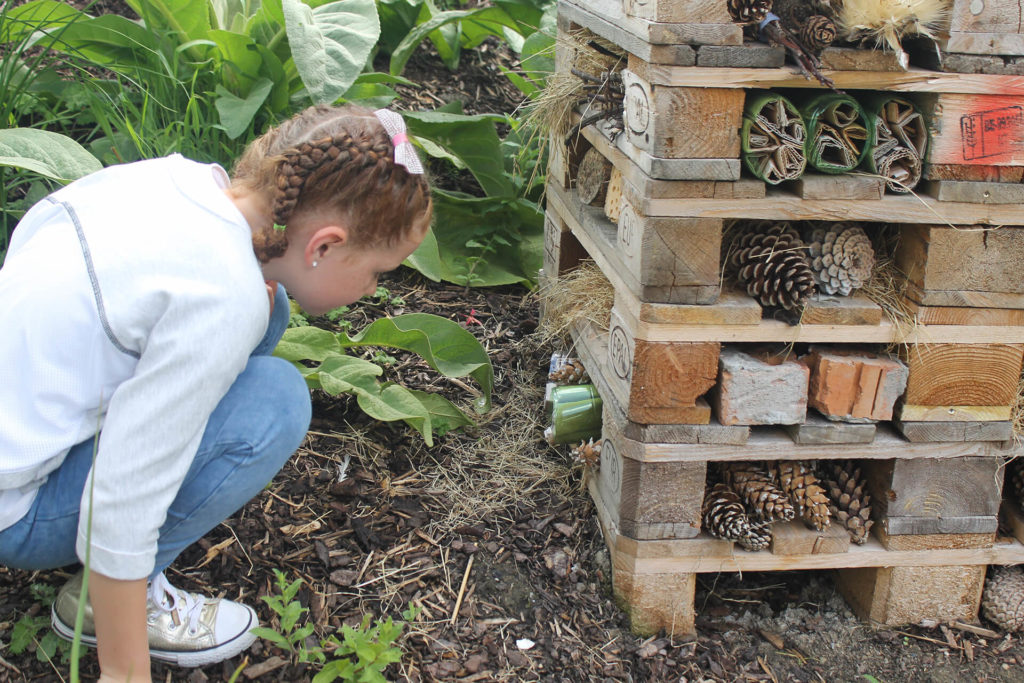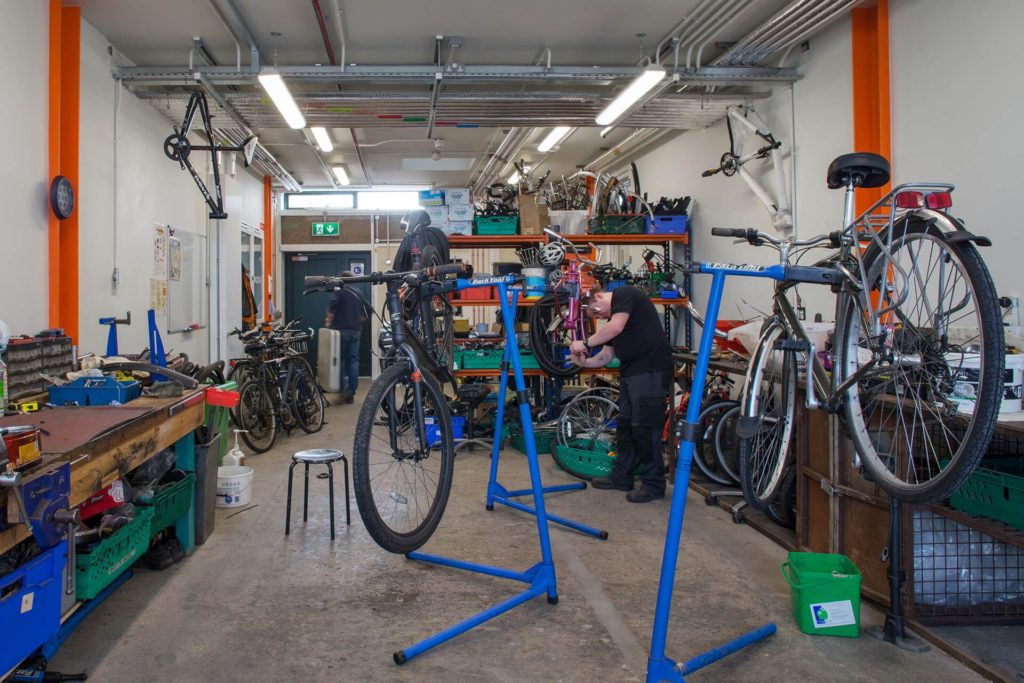How About a Social Circular Economy?
On 14 January 2022, the Organisation for Economic Cooperation and Development (OECD) and the European Commission published a policy brief on making the most of the social economy’s contribution to the circular economy, triggering questions.
We caught up with Julie Rijpens, Policy Analyst in the Social Economy and Innovation Unit at the OECD Centre for Entrepreneurship, SMEs, Regions and Cities, to find out more about the research and key findings of this paper.
What exactly is the social economy?
The social economy refers to organizations and enterprises that prioritize social impact and put social and environmental concerns, alongside economic objectives, at the heart of their business models. Social economy organizations distinguish themselves in two ways: first, their purpose – they primarily address societal needs and pursue a social purpose – and secondly, their way of operating – they implement specific business models, based on democratic and participative governance as well as collaboration, often at the local level. Typically, the social economy includes associations, co-operatives, mutual organizations, foundations and social enterprises.
It is also a significant economic and social actor, made up of different types of organizations active in almost all sectors. According to the latest available data, there are 2 million social economy entities in the EU, accounting for 6% of EU employment. A study by the International Centre of Research and Information on the Public, Social and Cooperative Economy (CIRIEC) shows that, in 2015, 9 to 10% of the workforce in countries such as Belgium, France, Italy, Luxembourg and the Netherlands were employed in the social economy. In Croatia, Lithuania, Malta, Romania, Slovenia and the Slovak Republic less than 2% of employment existed in the social economy in that same year.

How do the social economy and the circular economy come together?
The social economy has played pioneering roles for decades in shaping and expanding the circular economy, through activities such as repairing electronics and textile recycling, reusable consumer goods, and repair and remanufacturing initiatives that extend the lifespan of products and materials. We all probably know an example of an association or social enterprise active in repairing electronics, furniture or other goods being sold in second-hand shops. The social economy also contributes to other circular activities like restoring natural ecosystems, e.g. through regenerative farming techniques, optimizing the use of resources through eco-design and supporting the collaborative economy via sustainable platforms.
Social economy organizations engage in circular value chains and can reinforce social inclusion. They create decent work and provide training and working opportunities for vulnerable groups, as do Work Integration Social Enterprises (WISEs) active in the circular economy. As an example, through its members, mainly in Europe, RREUSE federates a network of approximately 850 social enterprises operating in the field of reuse, repair and recycling. These organizations collectively handle around 1 million tons of goods and materials annually, generating a turnover in excess of EUR 1.1 billion, which the organizations use to provide jobs and training to over 100 000 individuals. According to data coming from a RREUSE survey, their members operating as work integration social enterprises employ between 45% and 80% of disadvantaged individuals at risk of social exclusion. They also contribute to the uptake of circular goods and services by making them affordable.
Finally, social economy organizations often operate at the local level and thereby contribute to designing and inspiring circular business models based on proximity and collaboration. This is critical for organizing circular value chains at the territorial level through partnerships among actors and for more community engagement. This ability to collaborate locally allows social economy organizations to play a specific role in circular value chains as an “integrator” that connects local actors and facilitates their collaboration.

Many criticize the circular economy for lacking strong societal components in view of a more equal society, fair labor conditions and redistribution of wealth. Can the social economy help address these shortcomings and make the circular economy more social?
Social economy organizations are driven by a mission of serving the common good, protecting the general interest and increasing individual and community welfare. They put social and environmental concerns at the heart of their business model, prioritizing social impact over the maximization of return on capital. This enables them to favor a longer-term perspective and to re-invest some profits in the pursuit of their social or environmental purpose; that way, they can develop activities that benefit society but may appear as less profitable from a capital investor’s perspective. Typically, inclusive governance structures, which often involve multiple actors (e.g. donors, users, beneficiaries or public authorities), next to investors, also encourage this.
I believe that the social economy is well-positioned to inject a strong social component into the circular economy and reinforce its benefits for people and communities. Due to work integration, social enterprises provide many opportunities to vulnerable groups. Some entities also strive to improve working conditions along the value chains, and reduce informality. For example, in Canada, Colombia and Peru, cooperatives have helped improve the working conditions of informal waste pickers, sometimes to a level where waste picking has become a formal profession.
Social economy organizations can also improve the affordability of circular goods such as in second-hand shops and offer affordable ‘circular’ services for all. They sometimes offer educational activities to fight the digital divide or encourage citizen participation in the circular shift. Social economy organizations can also contribute to social cohesion and a sense of community by providing people with opportunities to engage in local projects (e.g. as volunteers or members of co-operatives and associations). This favors informed decisions about consumption choices and their socio-economic impacts, which encourages circular behaviors and transforms the economy and society.

What are the biggest challenges in bringing the social economy and circular economy together for the benefits of people, job creation and society?
The circular economy is still far from reaching its full potential and needs to be better integrated into the mainstream economy. It needs to overcome challenges linked to implementing efficient circular business models and value chains, build appropriate skills, improve work conditions, increase business and consumer engagement, and create appropriate policy frameworks to advance the circular agenda.
The good news is that the social economy provides a range of solutions to these challenges, as project initiators/creators, and innovators themselves, and as a means to engage citizens, firms and territories in circularity. However, social economy organizations also face barriers that may hinder their contribution to the circular economy. Despite important efforts these last years, a lack of awareness of what the social economy is and how its entities positively impact our economies and societies prevails. More efforts are needed to build the evidence base; we need to help citizens and policy makers better understand the social economy’s economic and social/environmental value and how it can help us transition toward a more inclusive and sustainable future. Similar to the general challenges faced by circular initiatives, many social economy organizations also need to consolidate their business models, improve financial viability and address skills shortage specific to the circular economy.
Here are two examples from our policy brief: In Ireland, The Rediscovery Centre brings together the expertise of artists, scientists, designers and craftspeople sharing a common goal: sustainability. It supports four reuse social enterprises that upcycle unwanted materials, such as furniture, textile and bicycles, for new product development while creating training and employment opportunities for the long-term unemployed. The Sonian Wood Coop in Belgium is another example that shows how social economy organizations can connect local actors and integrate circular value chains, in this case to sustainably manage a common good – the Sonian Forest. The co-operative was launched in 2019 to work with forest owners, sawmills, carpenters, designers and others to keep wood sourcing and product development as local as possible.
To what extent was and is the social economy already part of the European Commission’s former and current Circular Economy Packages? Is the Commission planning to consider social and societal issues more as key components of its circular transition in the future?
(Julien De Beys, Policy Officer at the European Commission’s Directorate-General for Employment, Social Affairs and Inclusion (DG EMPL), and William Neale, Adviser at DG Environment, answered this question as part of the Commission’s contribution to the policy brief and this interview.)
Circular economy approaches have revolutionized environment policy by focusing on the entire life-cycle of products and on wellbeing rather than GDP, not only on ‘punishing polluters’. It is focused on economic incentives rather than legal limits. It therefore needs businesses to enable it. But although it is driving an economic transition, with important economic and social consequences, the social economy has not been central to either the previous or current circular economy action plans.
This is not because we do not recognize their importance or potential; it is rather because the tools and competences we have at EU level are not the ones that can promote social economy approaches to circularity directly. So, for example we are using Ecodesign and waste legislation to ensure that products are reparable, upgradeable and recyclable, and that they are separately collected as waste, and this will make many more social enterprises viable. However, those enterprises will (mostly) be created a long way from Brussels, and will depend far more on what happens at national, regional or municipal levels. That being said, the Commission is supporting all social economy actors for several years, including those active in the environmental field.
In December 2021, the Commission has adopted its Action Plan for the Social Economy. This document offers a good overview of all the actual and future policies developed in favor of social economy at EU level. Among others, one will read that the Commission intends to issue guidance on how best to support partnerships for the circular economy between social enterprises and mainstream businesses.
As more and more countries, regions and cities around the globe are developing circular economy strategies: what is the OECD’s advice on incorporating social economy components and approaches into these circular strategies?
The ongoing recovery from the COVID-19 pandemic provides a unique opportunity to promote a green and inclusive transition, which makes the point for reinforcing the links between the circular and the social economy. There is definitely momentum now: a growing number of policy initiatives supports either the circular or the social economy, and increasingly the combination of both, which is promising.
Building on 25 years of social economy analysis and policy design, our policy brief identifies a range of actions policy makers can take to better capitalize on the social economy’s potential to contribute to the circular shift – the four most important ones are:
- Promote social economy integration into the circular economy by raising awareness, sharing knowledge, boosting market demand or encouraging innovation;
- Support social economy actors already active in the circular economy, such as through public procurement and improved access to finance;
- Encourage dialogue, strategic partnerships and novel forms of collaboration amongst public actors, social economy organizations and businesses along value chains and within territories;
- Help build the evidence base and produce robust data on social economy organizations active in the circular economy to measure their full economic value as well as their social and environmental benefits.
I warmly invite all you to explore the many examples of policy initiatives in our policy brief and learn more about how they help unleash the potential of the social economy in the circular economy